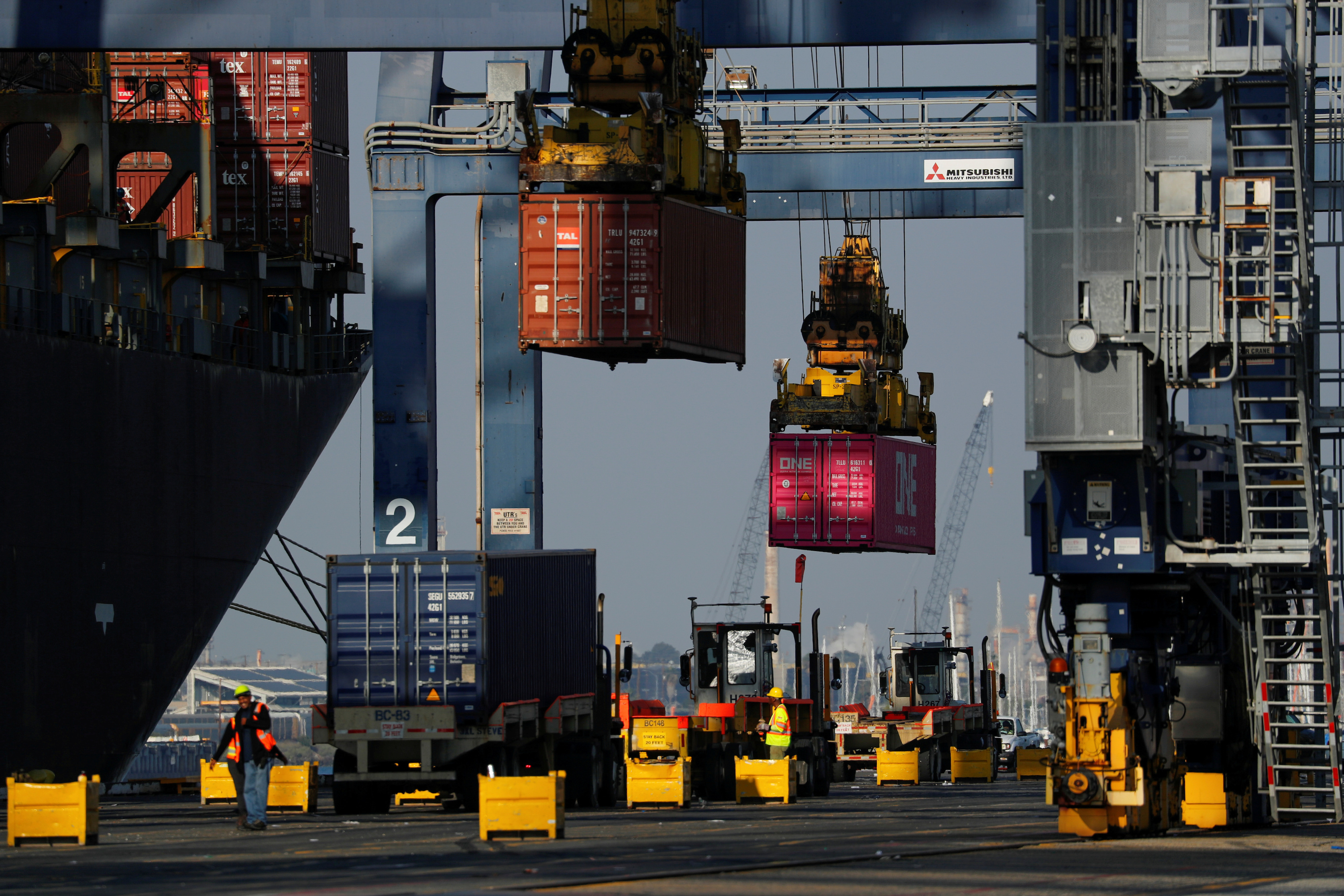US Trade Deficit Falls to 1.5-Year Low Amid Fewer Imports from China
Americas trade deficit fell by 7.6 percent in October to a 16-month low, driven in part by lower imp..
Americas trade deficit fell by 7.6 percent in October to a 16-month low, driven in part by lower imports from China amid the ongoing trade dispute.
The deficit in the nations October trade bill dropped to $47.2 billion from a revised $51.1 billion the previous month, the Bureau of Economic Analysis said Thursday. The drop was the second straight monthly decline in the trade account as both imports and exports of goods fell.
The smaller trade gap could boost gross domestic product in the fourth quarter.
Total October imports were $254.3 billion, $4.3 billion less than September imports, representing a 1.7 percent month-to-month drop.
Imports of Chinese goods fell by $1.8 billion to $35.3 billion from September to October, according to seasonally-adjusted, census figures.
Products that the United States imported fewer of in October versus September include pharmaceuticals, cell phones, clothes, toys, and television sets.
In the same period, American exports to China fell from $9 billion to $7.5 billion.
Total October exports from the United States amounted to $207.1 billion, which is a month-to-month drop of 0.2 percent, or $0.4 billion.
The decreases in imports and exports come as the trade conflict with China reaches its seventeenth month.

Its Got to Be Right
Washington and Beijing have yet to ink a so-called “phase one” agreement announced in October, which had raised hopes of a de-escalation of the trade conflict between the two nations.
The worlds two largest economies said in October they had reached a partial trade agreement, in principle, on intellectual property, financial services, and agriculture.
President Donald Trump and Chinese leader Xi Jinping had planned to meet and sign the preliminary trade deal at an Asia-Pacific leaders summit in Chile in mid-November, but the summit was canceled.


Speaking ahead of a meeting with NATO leaders in London, Trump said a trade agreement with China might have to wait until after the election in November 2020.
“I have no deadline, no. In some ways, I think I think its better to wait until after the election with China,” Trump told reporters. “In some ways, I like the idea of waiting until after the election for the China deal. But they want to make a deal now, and well see whether or not the deals going to be right; its got to be right.”
U.S. stocks took a dive on Tuesday after Trump suggested a trade deal might have to wait.
The Dow Jones Industrial Average fell more than 450 points in morning trading, recording its biggest fall in two months. The S&P 500 and the Nasdaq Composite also lost more than 1 percent.
On Wednesday, Trump said trade talks with China were going “very well,” sounding a more optimistic note than at the NATO summit.
Investors have been hoping that the United States and China can avert an escalation of their trade tensions, which have strained investor confidence.
Recession Less Likely: Expert Survey
Some two dozen top economists told Bankrate in a Q4 poll that there was a 35 percent chance of a recession in 2020, compared to a 41 percent chance expressed in a similar Q3 survey.
The findings of Bankrates Fourth-Quarter Economic Indicator survey show that the experts, mostly chief economists and senior executives of financial institutions, areRead More – Source
